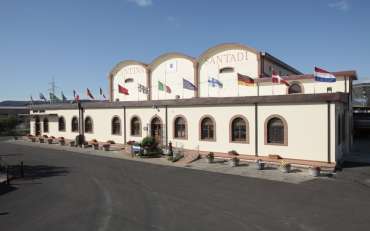La Cantina Santadi
Since 1960, vini fatti con arte.
Carignano, prince of Sulcis
The Cantina di Santadi Winery is located in the Sulcis area, in South-western Sardinia, just a few miles as the crow flies from the dazzling beaches and white sand dunes of Porto Pino.
It was established in 1960, and after some start-up difficulties, a new management gave it a decisive boost, driven by strong determination which fanned enthusiasm and passion.
Thus the Winery embarked on an ambitious programme, adopting new strategies and clear targets, streamlining its operations and issuing coherent guidelines to its member grape growers.
The foremost aim was to stake operations on quality bottled wines, especially typical reds, enhancing and promoting the primary local cultivar: carignano, while not forgetting white grapes with a distinguished tradition in Sardinia, such as vermentino, nuragus and nasco.
Winemaking technique and wine selection were also perfected, by securing the consultancy of international wine expert Giacomo Tachis, whose arrival at the Winery was a major turning point. The grapes grown in erect shrub vineyards (Latin vineyard) produce wines based on the carignano cultivar, with rich, expansive aroma and taste, noble tannins and a perfect balance between acid-organic elements, alcohol and polyphenols.
Innovative spirit with respect for tradition
Wise use of French barriques gives a perfect, harmonious finishing touch to the development of these superb wines. The great reds: Terre Brune, Rocca Rubia, Noras, Araja, Grotta Rossa and Antigua, are accompanied by stylish whites: Villa di Chiesa, Cala Silente, Pedraia, Villa Solais, Latinia, all offsprings of an ancient winemaking tradition coupled with the use of state-of-the-art technology in the sectors of vinification, stabilization and bottling.
The coupling of innovative spirit with careful respect for local traditions is the guiding principle for our grape growers and winemakers. Their constant commitment is directed both at honouring our Winery, and at safeguarding a true heritage of tradition, culture, taste, style and history which are the vital essence of our agricultural reality.



